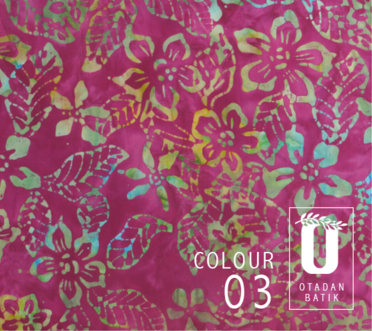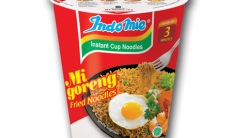New Straits Times, Malaysia
Bernama
NEW YORK, FRI:
An international expert on Islamic influence on textile is “deeply impressed” with Malaysias textile culture.
Elisa Gagliardi-Mangilli, fresh from a visit to Malaysia where she was accompanied by Datin Amy Hamidon, the wife of Datuk Hamidon Ali, the New York based Malaysian permanent representative to the United Nations, said she had an “overview” of Malaysias textile culture dating back to the 19th century, the time from when textiles manufactured in the country have been preserved.
Gagliardi-Mangilli is a senior fellow at the prestigious Metropolitan Museum of Art (MMOA) in New York and a member of CIETA, the Centre International dEtudes des Textiles Anciens.
She has authored books on collections of old textiles from Siam, China, etc. which belonged to the royal family of Thailand. Some of the titles of the books authored by her include “Printed and Painted Textiles of the 18th Century” and “LArte Di Fabbricare LIndiane” (How to Produce the Printed and Painted Textiles of India).
She has also written many articles, including one on the famous Kashmiri shawl which is widely sold in India.
Gagliardi-Mangilli, who is currently on a two-year loan from the University of Insubria in Italy and doing research for the MMOA on the differences and similarities in the Islamic textiles of the Persian Safavid era and the Indian Moghul courts, says that pre-19th century Malaysia-made textiles were not available.
She also got a “sneak preview” of the textile collections of some of the royal families of Malaysia.
“My interest in Malaysian textiles was first aroused by Amy Hamidon, and I gave a lecture on the Islamic and Indian textiles and their influences on European and Southeast Asian textiles. I shall publish my research on Safavid and Moghul velvets.
“I visited Malaysia from August 7 to 16 to understand the quality and variety of the textile collections of the Royal families of Malaysia. I visited Kelantan, Johor Baharu, Melaka and Kuala Lumpur where we saw textiles in the local museums,” she said in an interview with Bernama at the residence of the Malaysian permanent representative.
Gagliardi-Mangilli, an expert on the intricate weaving and designing of textile fabrics of a number of Asian countries, is trying to publish a voluminous book on the “textile treasures” of Malaysia, particularly the
“fabulous collections” of the countrys royal families. The book will highlight the cultural heritage of the royal families.
She felt a sense of loss that she was unable to find Malaysian textiles before the 19th century. “Textiles from the 19th century onwards were preserved in good condition. I saw songket, batik and other textile pieces, all in beautiful colours and designs,” she observed. But she said that the ubiquitous influence of Indian textiles, in particular, on Malaysian textiles was unmistakable.
“Southeast Asian textile producers relied heavily in those times on Indian textiles and copied them. However, the quality of Malaysian fabrics is good and so is the gold used for some of the fabrics,” she pointed out.
She discerned that Malaysian textiles were characterized by a combination of Ikat (involving the use of threads already dyed and pre-determined patterns) technique. Ikat, she explained, can be seen in the piece called `Kain Limar’ in Malay language.
“I have taken pictures with the magnifying lenses to count the number of threads. I will be categorising the textiles and hope to visit Malaysia as soon as I possibly can for a second categorisation.
“Subsequently, I will search for a publisher in the United States, Italy, India or elsewhere. India, as you know, has an ancient tradition of textile manufacturing,” Gagliardi-Mangilli said.
She was very excited about her first encounter with Malaysias “rich textile culture”.
“Yes, the visit was very fruitful for me,” she concluded





